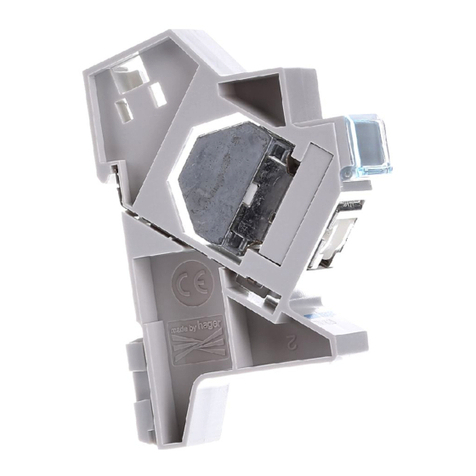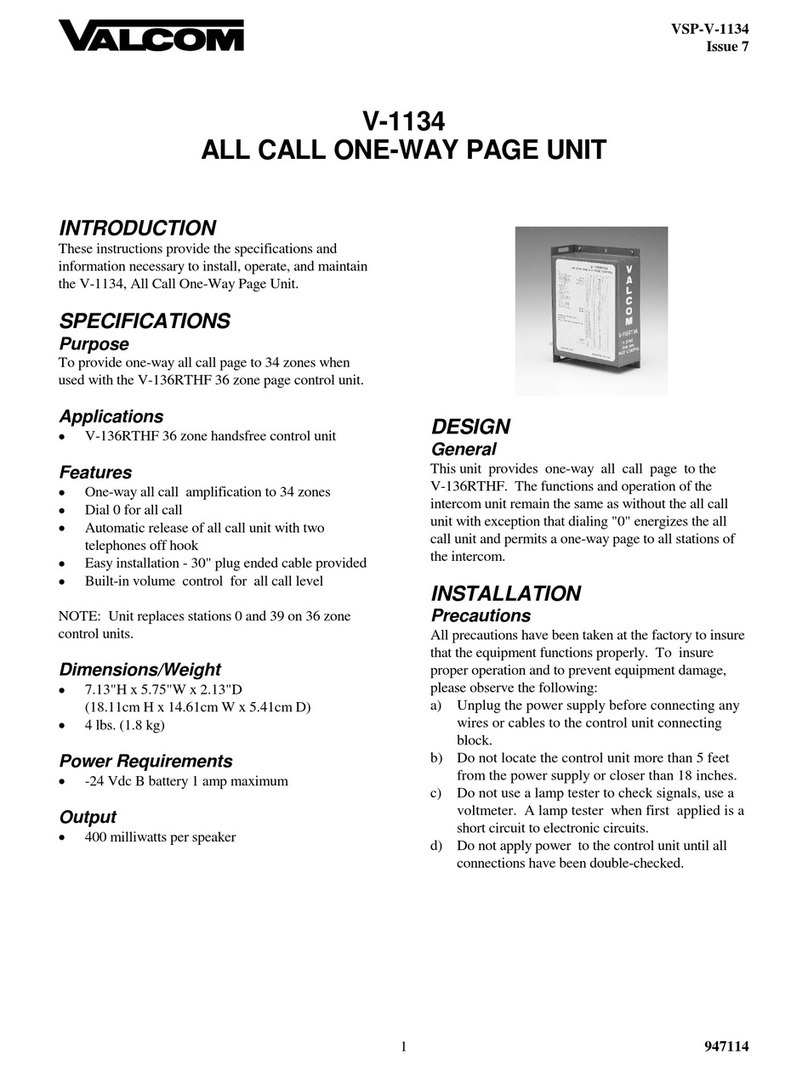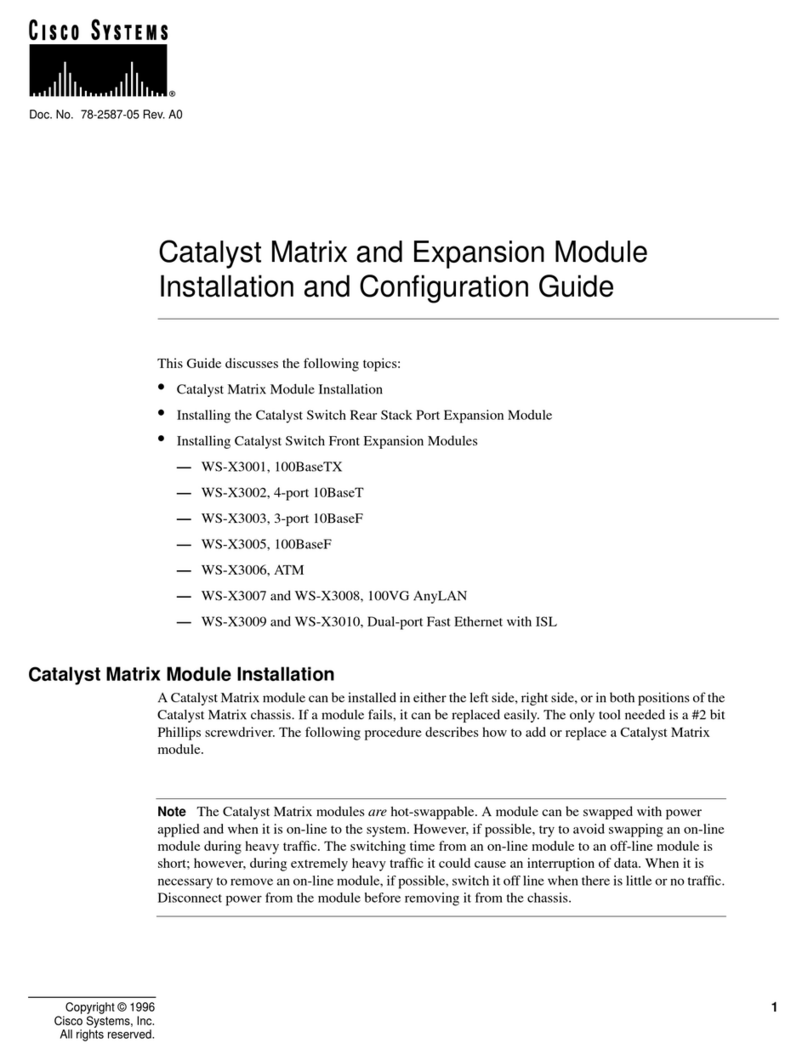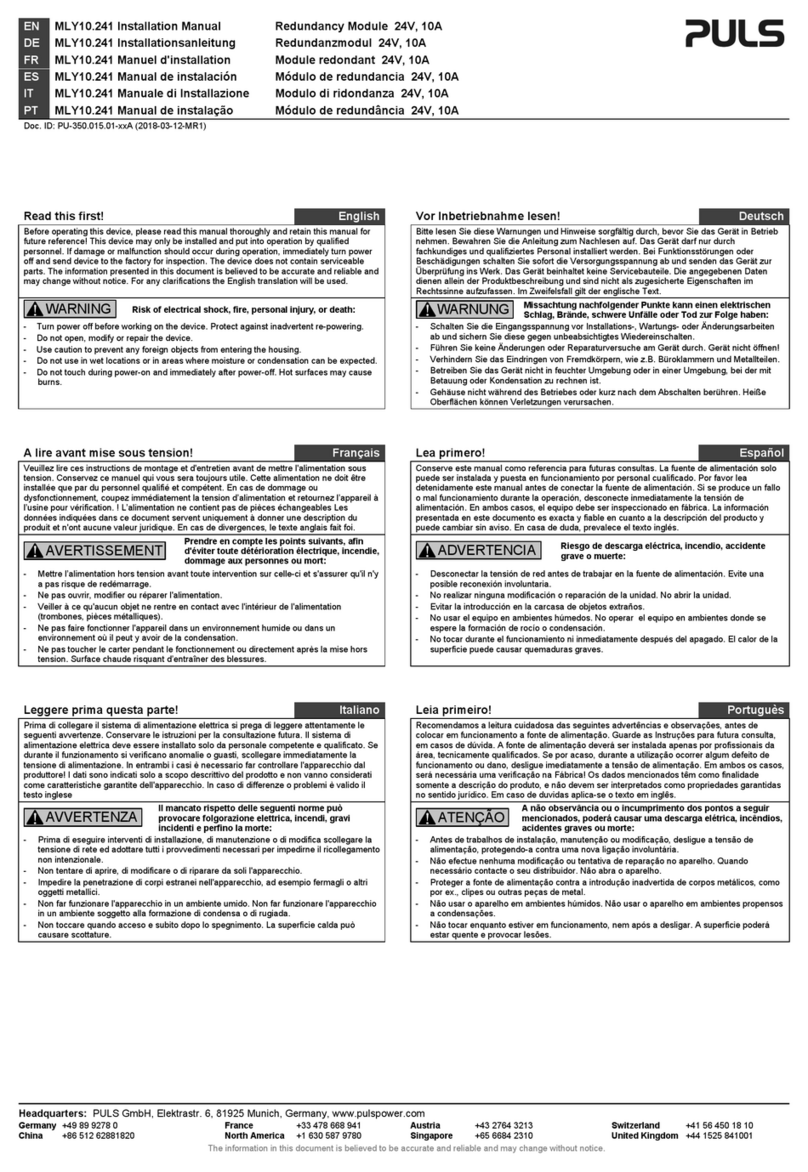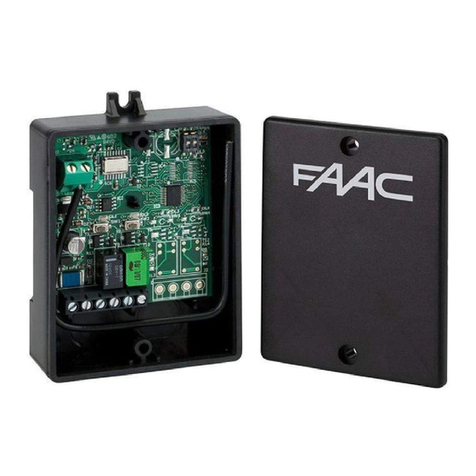Crosby OMNI-TRIM 900 Series Guide

SERIES 800
Threaded Connection
Series 800
Threaded Connection
Series 900
Instruction No. IS-V3117
Effective: April 1998
Crosby Valve Inc.
SERIES 900
Seal & Wire
O-Ring
O-Ring Soft Seat
Metal-To-Metal Seat
Cap
Spindle
AdjustingBolt
Adjusting Bolt Nut
Spring Washer
(Top)
Spring
Spring Washer
(Bottom)
Guide
Disc Holder
Disc Insert
Cylinder
Base
Cap
Spindle
AdjustingBolt
Adjusting Bolt Nut
Spring Washer (Top)
Spring
Spring Washer
(Bottom)
Guide
Disc Holder
Set Screw
Set Screw Gasket
Disc Insert
AdjustingRing
Cylinder
Base
Seal & Wire
O-Ring
O-Ring Soft Seat
Metal-To-Metal Seat
Installation, Maintenance and Adjustment Instruction for Crosby®Series 800
Adjustable Blowdown and Series 900 OMNI-TRIM®Pressure Relief Valves
GENERAL
Crosby® valves have been tested and adjusted at the factory. As service
conditions differ it may be necessary to make slight adjustments. These
adjustments are easily made if the instructions below are carefully
followed.
Warning:Tohavetroublefreeperformancebesuretothoroughly
clean the inlets and outlets of valves before installing.
STORAGE AND HANDLING
Valves are often on hand at the job site months before they are installed.
Unless properly stored and protected, valve performance may be ad-
versely affected. Rough handling and dirt may damage or causemisalign-
ment of the valve parts. It is recommended that the valves be left in their
original shipping containers and that they be stored in a warehouse or as
a minimum on a dry surface with a protective covering until they are used.
Pressure relieving valves must be handled carefully and never
subjected to sharp impact loads. They should not be struck, bumped
or dropped. Rough handling may alter the pressure setting, deform valve
parts and adversely affect seat tightness and valve performance.
NOTE: Where valves have levers as in Types D and E Top Con-
struction, DO NOT LIFT OR CARRY VALVES BY THE LEVERS!
Inlet and outlet protectors should remain in place until the valve is ready
to be installed on the system.
INSTALLATION
– Inlet Piping
The valve should be mounted vertically in an upright position either
directly on a nozzle from the pressure vessel or on a short connection
fitting that provides adirect,unobstructed flowbetweenthevesseland the
valve. Installing a pressure relief valve in other than this recommended
position might adversely affect its operation.
A valve should never be installed on a fitting having a smaller
inside diameter than the inlet connection of the valve.
Compliance with the above recommendations will assure clean positive
valve operation.
Many valves are damaged when first placed in service because of failure
to clean the connections properly when installed.
Both the valve inletand the vessel and/or line onwhich the valve
is mounted must be thoroughly cleaned of all dirt and foreign
material.
– Outlet Piping
Discharge piping should be simple and direct. A broken connection near
thevalveoutletispreferred.The weight ofthedischargepiping shouldbe
carried by a separate support and be firmly braced against swaying or
vibrations.
Fittings or pipe having a smaller inside diameter than the valve
outlet connections must not be used. The flow from the valve
must discharge to a safe disposal area.
THE SAFETY OF LIVES AND PROPERTY OFTEN DEPENDS ON
THEPROPEROPERATIONOFTHEPRESSURERELIEFVALVES.
THE VALVES MUST BE MAINTAINED ACCORDING TO APPRO-
PRIATE INSTRUCTIONS ANDMUST BE PERIODICALLY TESTED
AND RECONDITIONED TO ENSURE THAT THEY FUNCTION
CORRECTLY.
Crosby®Pressure Relief Valves described in this instruction are
manufactured in accordance with the requirements of ASME Boiler
andPressureVesselCode,SectionVIII.Capacitiesarecertifiedbythe
Crosby_ReliefValve_800_900_iom_D498

MAINTENANCE – DISMANTLING
1) Remove the cap.
2) Before removing the adjusting bolt, take a measurement from the top
of the adjusting bolt to the top of the cylinder as a reference for
resetting the valve later.
3) Loosen the adjusting bolt nut and turn the adjusting bolt counter-
clockwise to completely remove the load on the spring. Unless this is
done, unnecessary damage to the seat or misalignment of the trim
parts may occur when the valve is reassembled.
4) On Series 800 valves remove the set screw and gasket.
5) Unscrew the cylinder from the base. Lift the cylinder from the base
making sure that the guide remains on the base.
NOTE:Iftheguideisnotremovedwiththebase,inverttheentirevalve
and remove the base. Then remove the guide, disc holder and disc
insert.
6) Remove the spindle, spring and spring washers.
7) Invert the base/guide/disc assembly and remove the base.
8) Remove the disc holder assembly.
– Metal Seated Valves
The disc insert is not attached to the disc holder so use care when
removing this assembly.
– O-Ring Seated Valves
Remove the disc insert by inserting a drive pin or similar tool into the hole
in the disc holder and press out the disc insert. Remove the O-ring with a
suitable tool. Be careful not to damage the O-ring groove.
CLEANING
The followinginstructionsaregeneralguidelines.Certainapplicationsmay
require the use of special cleaning procedures.
1) After the valve has been completely dismantled, the seats on both the
nozzle andthe disc insertshould beexamined to determinehow badly
they are damaged, ifat all. Any severe damage maymake it advisable
to replace the parts.
2) External parts, such as the cylinder and cap, can be cleaned by
immersion in a bath such as a hot oakite solution or equivalent.
3) Internal parts, except O-rings, can be cleaned using acetone, dena-
tured alcohol or any other suitable solvent. Mechanical cleaning of
internalparts, exceptseats,can beperformedusingfinesandpaperor
emery cloth.
LAPPING OF SEATS –METAL SEATED VALVES ONLY
Many different methods exist for lapping valve seats but certain essential
steps are required for satisfactory results. Extreme care should be taken
throughout to make certain that the seats are kept perfectly flat. The
following procedure is suggested for lapping bases and disc inserts:
1) Never lap the disc against the base. Lap each part separately
against a cast-iron lapping block of proper size. These blocks hold the
lapping compound in their surface pores and must be recharged
frequently.
2) Check the lapping block frequently on a good lapping block
reconditioner to make certain that it is perfectly flat.
3) If considerablelappingis required, spread athincoat of medium coarse
lapping compound on the block. After lapping with this, lap again with
a medium grade compound. Unless much lapping is called for, the first
stepmaybe omitted. Next, lapagainusing a finegradecompound. Lap
theblock against theseat. Do not rotatetheblock continuously, but use
an oscillating motion as in grinding automobile valves.
4) When the seat is flat and all nicks and marks have disappeared,
remove all compound from the lapping block and seat. Apply polish-
ing compound to another block and lap the seat with this. As the
lapping nears completion, only the compound left in the pores of the
block should be present. This should give a very smooth finish. If
scratches appear, the cause is probably dirty lapping compound.
These scratches should be removed by using a compound free from
foreign matter.
5) After wiping off all compounds, the valve is ready for assembly.
TESTING
Testing should be performed by trained personnel using the applicable
test procedure. Follow these guidelines for performance of the set
pressure test.
– Test Fluids – Set Pressure Test
The test fluid should be air or nitrogen for valves used on gas and vapor
service andwaterforvalvesusedonliquidservice.Note:Series800valves
are for gas and vapor service only. Valves for steam service should be
tested on steam. When steam testing is not possible, valves for steam
service may betestedonairornitrogen.Insuchcasesitmaybenecessary
to make a correction to the adjusted set pressure to compensate for the
difference in temperature of the test fluids.
– Temperature Correction
When a valve is set on air or water at room temperature and then used at
a higher service temperature, the cold differential set pressure shall be
corrected to exceed the set pressure using the following temperature
correction:
OPERATINGTEMPERATURE %PRESSURE
Degrees F Degrees C INCREASE
0 to +150F -18 to +66C NONE
+151 to +600F +66 to +316C 1%
+601 to +750F +316 to +399C 2%
– Valve Operation
Valvesintendedforcompressiblefluidserviceandtestedonair,nitrogenor
steam will open with a sharp, clear popping action at the set point.
Valves for liquid service tested with water are considered open at the first
continuous unbroken stream of liquid flowing through the valve. Sometimes
itis helpfulto installa shortpieceofpipeinthevalveoutlettodetermine the
opening on water.
SET PRESSURE CHANGES
Set pressure changes beyond the Crosby specified spring range will
necessitate a change in the valve spring assembly consisting of the spring
and two washers.
The new spring and washers must be obtained from
Crosby and the valve must be reset and the nameplate restamped by
an authorized repair facility.
SET PRESSUREADJUSTMENT
Before making any adjustments reduce the pressure under the valve seat
to at least 25% below the stamped opening pressure. This will prevent
seat damage due to turning of the disc insert on the nozzle seat and
minimize the chance of an inadvertent opening.
BLOWDOWN ADJUSTMENT – SERIES 800(GasandVapor
Service only)
The adjusting ring is set at the factory and resetting in service is seldom
necessary. Should it be necessary to change blowdown the ring may be
adjusted as follows:
Caution: Should any adjustments be made while the valve is
installed on a pressurized system, the valve should be gagged
while ring adjustment is made.
Remove the set screw and insert a screwdriver to engage the ring notches.
Turning the ring to the right raises the ring, thereby decreasing the
blowdown. Turning the ring to theleft lowers the ring, therebyincreasing
the blowdown.
The adjusting ring should not be moved more than two notches before
retesting. When making adjustments, always keep count of the number of
notches and the direction in which the ring is moved. This will permit
returning to the original setting in case of error.

MAINTENANCE – ASSEMBLY
1) Prior to assembly, the following parts are to be coated with a lubricant/
sealant such as pure nickel “Never-Seez” or equivalent. Other lubri-
cants/sealants can be used depending on service conditions.
ADJUSTINGBOLTTHREADS
CAPTHREADS
CAPTOCYLINDER
SEALINGSURFACE
SPRING WASHER
BEVELS
GUIDESEALING
SURFACES
BASETOCYLINDER
THREADS
SPINDLE POINT BEARING
SURFACE(METALSEATED
VALVEONLY)
View Showing
Valve Gagged with Test Rod
(Types B and E)
Type B
Type A
Type D
Type
E
Cap
Test Rod
Cap Plug
Cap Plug
O-Ring
Cap
Cap Plug
Cap Plug
O-Ring
Locknut
Spindle Nut
Cam
Cap
Locknut
Spindle
Nut
Cam
Cap
Cam Sleeve
O-Ring
Cam Sleeve
Cam Sleeve
O-Ring
Cam Sleeve
Lever Pin
Cam O-Ring
Lever
Lever Pin
Cam
O-Ring
Lever
ASSEMBLY OF CAPS AND LIFTING LEVER DEVICES
Type A (Screwed Cap)
Apply pure nickel Never-Seez or equivalent to the cap sealing surface and
screw the cap onto the top of the cylinder. Tighten the cap with a suitable
wrench.
Type B (Screwed Cap with Test Rod)
Applypure nickelNever-Seeztothecapsealingsurfaceand screwthecap
onto the top of the cylinder. Tighten the cap with a suitable wrench. Install
the cap plug O-ring and screw the cap plug into the cap. The test rod is
installed only during system hydrostatic testing.
Never install the test rod unless performing system hydrostatic
testing.
Type D (Packed Lifting Lever)
1) Apply Loctite 242 or equivalent to the spindle threads. Screw the
spindle nut onto the spindle. Screw on the cap handtight.
2) ApplyParkerSuperO-Lubeto the camO-ringandinstallontothe cam.
Insertthecamintothe sleeve.Installthelever ontothecamandsecure
with the lever pin.
3) Screw the lever assembly into the cap. If the cam interferes with the
spindle nut remove the spindle assembly and raise the spindle nut.
Repeat until the spindle nut is approximately 1/16" above the cam.
4) Once the spindle nut is in position, remove the cap and screw the
locknut on the spindle and, while firmly securing the spindle nut with
locking pliers, tighten the locknut.
5) Apply pure nickel Never-Seez or equivalent to the cap threads and to
the cap sealing surface. Screw the cap onto the top of the cylinder.
Tighten the cap with a suitable wrench.
6) ApplyParkerSuperO-Lubeor equivalent tothe camsleeveO-ringand
install the O-ring. Install the lever assembly.
Type E (Packed Lifting Lever with Test Rod)
Assembly of the Type E lifting lever is identical to the Type D with the
addition of the cap plug O-ring and the cap plug. The test rod is installed
only during system hydrostatic testing.
Never install the test rod unless performing system hydrostatic
testing.
2) DiscAssembly
– Metal Seated Valve
With the disc holder in the inverted position, drop in the disc insert.
– O-Ring Soft Seated Valve
CoattheentireO-ring(exceptTFEO-rings)withParkerSuperO-Lube.
Insert the O-ring into the groovein thedisc holder. Pushthe disc insert
into the disc holder. TFE O-rings may require the use of a small press
or, with care, a hammer and a punch.
3) (For Series 800 valves only) Screw the adjusting ring onto the guide
until the adjusting ring is in the lowest position.
4) With the guide inverted, drop in the disc assembly.
5) With the guide still inverted, install the base into the guide.
6) The base/guide/disc assembly can now be turned upright and placed
into a vise or fixture for assembly of the remaining components.
NOTE: Be sure to clamp only onto the wrench flats of the base.
7) Place the spring and spring washers onto the spindle.
8) While holding the spindle in place lower the cylinder into place on the
base and screw tightly onto the base.
9) Screw the adjusting bolt nut onto the adjusting bolt and install into
the cylinder.
10) Screw the cap onto the cylinder.
The following steps apply to Series 800 only.
11) Adjust the adjusting ring up five notches from the lowest position.
12) Install the set screw and set screw gasket making sure that the set
screw engages one of the notches of the adjusting ring. The adjusting
ring shouldmove back andforth slightly after the set screw is tightened.
SET SCREW GASKET
SEALING SURFACES
SERIES 800
ONLY
SET SCREW
THREADS

Replacement Spare Parts
Ordering Information
Crosby recommends that a sufficient inventory of spare
parts be maintained to support process requirements.
Always be sure to use genuine Crosby parts to ensure
continued product performance and warranty.
Parts
Toorderparts,thefollowinginformationshouldalwaysbe
included:
1. Quantity
2. Part name, i.e. (disc insert)
3. Size, style, type and valve number
4. Shop and/or serial number
5. Original purchase order number (if the nameplate
has been destroyed.)
Note: The size, style, shop number, set pressure and
serialnumbercanalwaysbefoundonthevalvenameplate.
Springs with washers
To order springs with washers, the required valve set
pressure must also be specified in addition to the other
partsinformation.Shouldbackpressure(fixedorvariable)
orelevatedtemperatureexistduringoperation,alsospecify
these conditions.
Crosby provides special “fast response” delivery service
of spare parts to satisfy unplanned parts requirements.
Fast response delivery service can be initiated by
contacting your local Crosby representative. Emergency
delivery service is available direct from the factory, 24
hours a day, 7 days a week by calling (508) 384-3121.
For additional information about Crosby Series 800 and
900 pressure relief valves, see Crosby Catalog No. 902.
Crosby Valve Inc.
©1998 Crosby Valve Inc.
USA Operations
Executive and Sales
Headquarters and
Manufacturing Plant
Crosby Valve Inc.
43 Kendrick Street
P.O. Box 308
Wrentham, Massachusetts
02093-0308
Tel: (508) 384-3121
(508) 384-7964
Fax: (508) 384-8675
Asia Pacific Operations
Headquarters and
Sales Office
Crosby Valve Pte. Ltd.
149 Gul Circle
Singapore 629605
Tel: (65) 862-2177
Fax: (65)862-1778
UK Operations
Headquarters, Sales Office,
and Manufacturing Plant
Crosby Valve and Engineering
Crosby Road
Market Harborough
Leics LE16 9EE, England
Tel: (44) (1858) 467281
Tlx: (851) 34431 CROSBYG
Fax: (44) (1858) 434728
Joint Ventures - Brazil, India
Manufacturing Affiliates - France, Japan
Sales Representatives, Pressure Management Centers, Assemblers, Designated Repair Centers - Worldwide
Ask for Crosby Worldwide Directory
15M-US-HR 4/98
Printed in U.S.A.
WARRANTY
Crosby Valve Inc., Crosby Valve and Engineering Division, Crosby
Valve Pte. Ltd., Crosby Valve Ltd. or Crosby Valve Sales and
Service Corporation (collectively "Crosby") hereby warrants that
the goods delivered under contract will be free from defect in
material and workmanship for a period of 18 months from ship-
ment or 12 months from installation, whichever is earlier. Within
this period, any of our products claimed defective may be returned
to our factory after written notification to and authorization by us,
and if found to be defective after examination by us, the products
will be repaired or replaced free of charge, F.O.B. our factory.
Such defects shall be exclusive of the effects of corrosion,
erosion, normal wear or improper handling or storage.
Crosby makes no representation, warranty or guarantee, ex-
press or implied, with regard to our products except as specifi-
cally stated. When in doubt as to the proper application of any
particular product, you are invited to contact your nearest
CROSBY office or representative. We cannot otherwise be
responsiblefortheselection ofunsuitableequipment. Suitability
ofthematerialandproductfortheusecontemplatedbythebuyer
shall be the sole responsibility of the buyer.
Except as specifically set forth above and for warranty of title,
CROSBY MAKES NO WARRANTY, EXPRESS OR IMPLIED,
OFANYKINDINCLUDINGWITHOUTLIMITATION,WARRAN-
TIESOFMERCHANTABILITYORFITNESSFORAPARTICU-
LAR PURPOSE.
In no event will CROSBY be liable for incidental or consequential
damages.
WARNING
The Product is a safety related component intended for use in
critical applications. The improper application, installation or
maintenanceoftheProductortheuseofpartsorcomponentsnot
manufactured by Crosby may result in a failure of the Product.
The advice of a qualified engineer should besought prior to any
use of the Product.
Any installation, maintenance, adjustment, repair or test per-
formed on the Product must be done in accordance with the
requirements of all applicable Codes and Standards.
The information, specifications and technical data (the "Specifi-
cations") contained in this document are subject to change
without notice. Crosby does not warrant that the Specifications
are currentand assumes no responsibility for the use or misuse
thereof. The Purchaser should verify that there have been no
changes to the Specifications prior to use.
This manual suits for next models
1
Popular Control Unit manuals by other brands
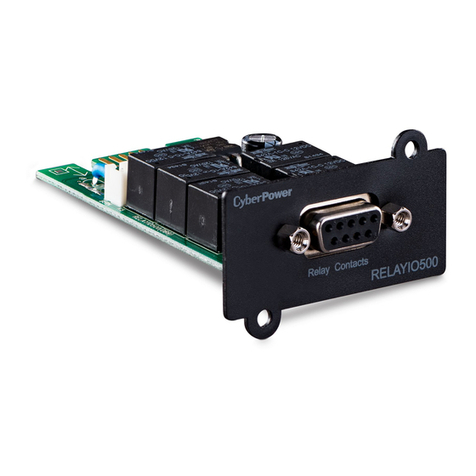
CyberPower
CyberPower RELAYIO500 user manual
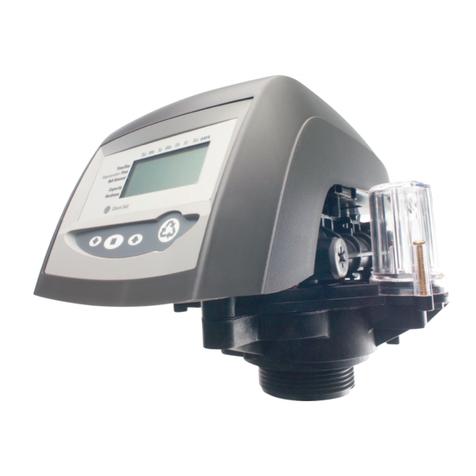
Pentair
Pentair AUTOTROL 742 Series Service manual
Viconics
Viconics VT8000 Series installation guide
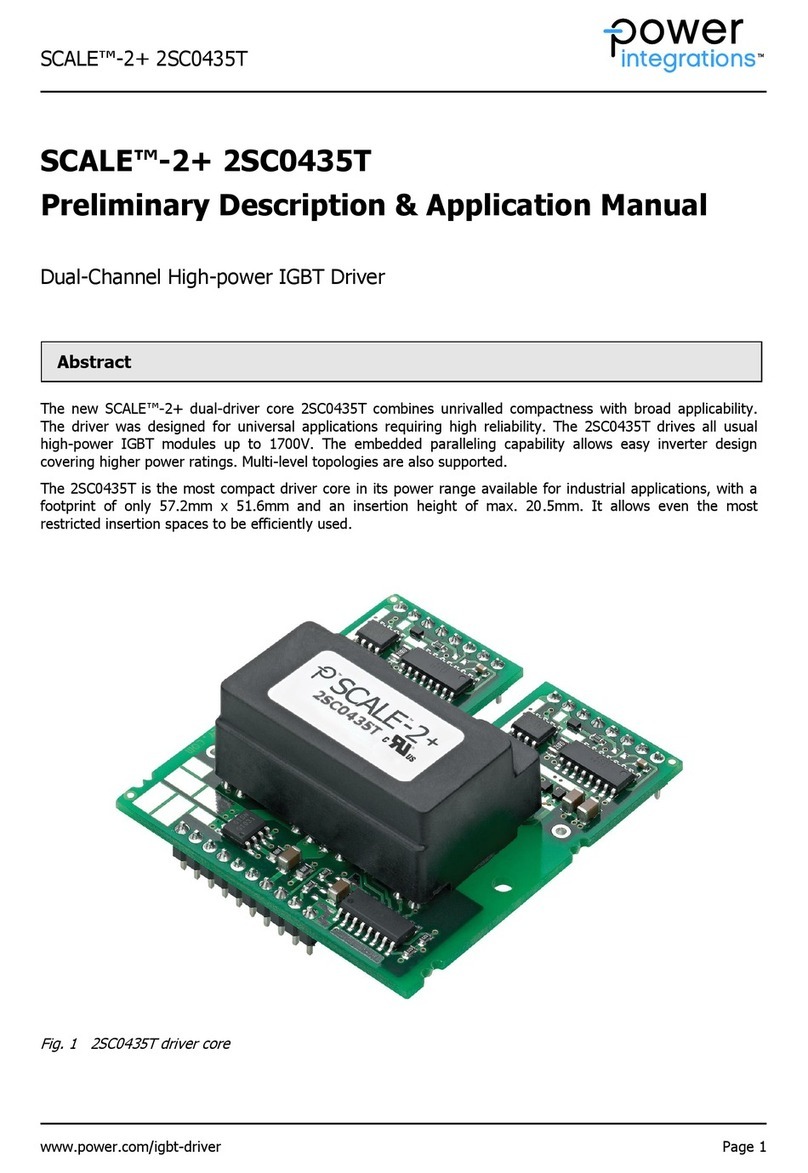
Power integrations
Power integrations Scale-2+ 2SC0435T Applications manual
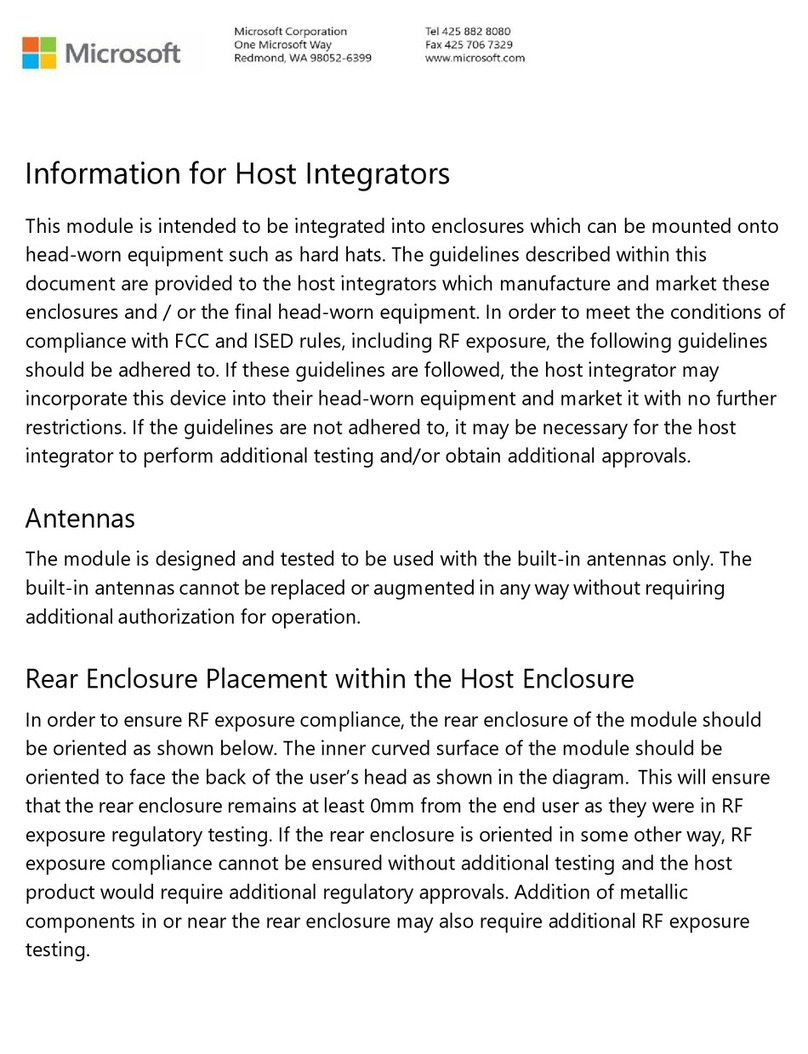
Microsoft
Microsoft 1925 quick start guide
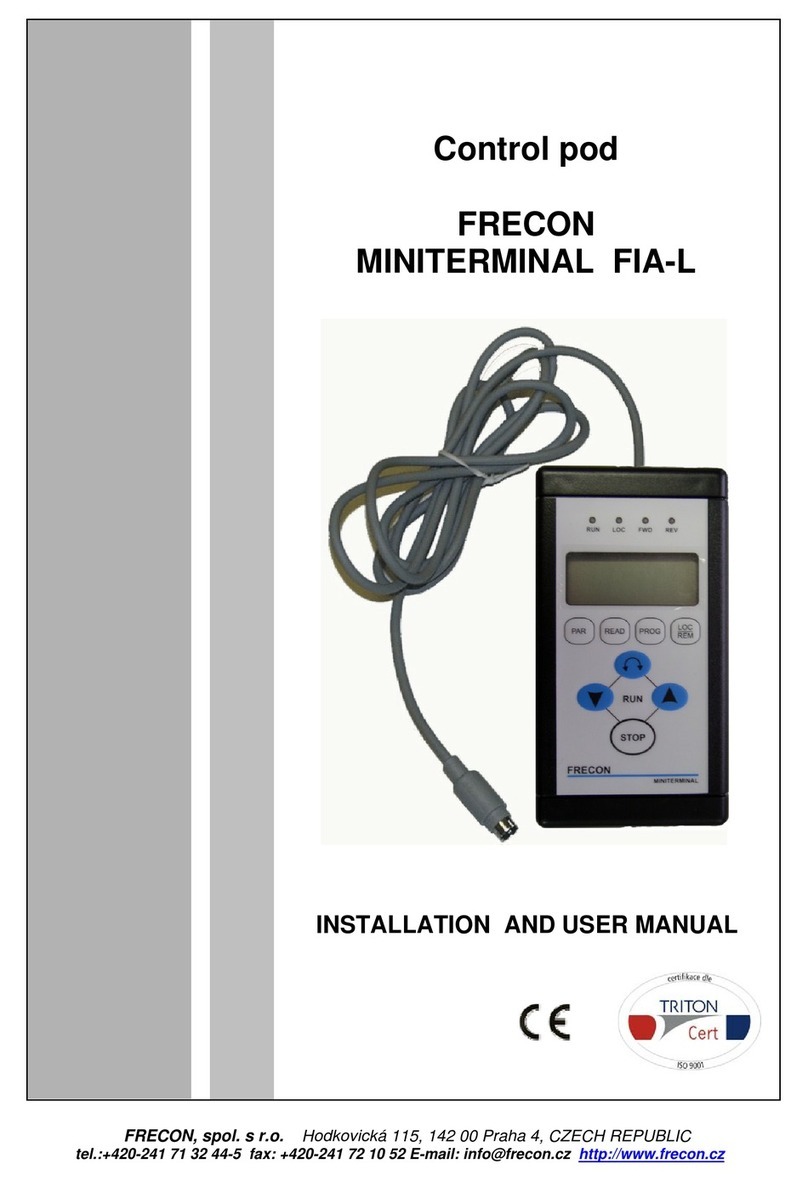
Frecon
Frecon MINITERMINAL FIA-L Installation and user manual
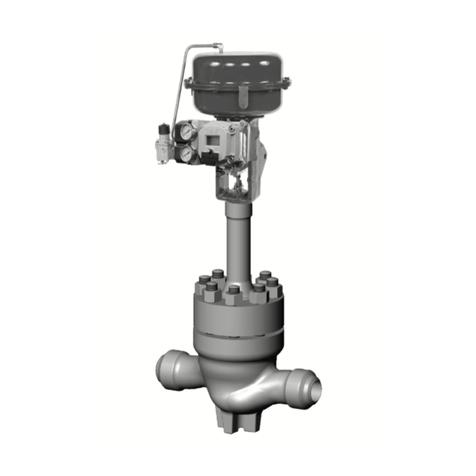
GE
GE Masoneilan 48000 Series instruction manual

Telit Wireless Solutions
Telit Wireless Solutions Jupiter SL869 user guide
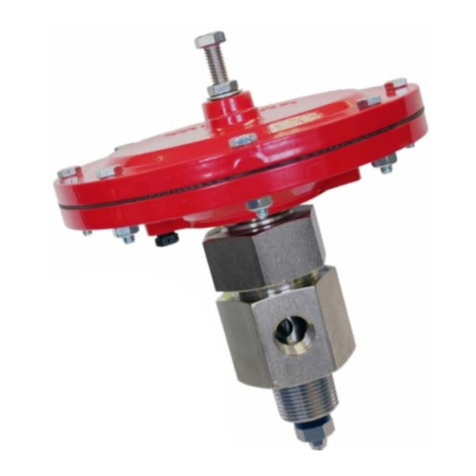
Murphy
Murphy DVU Series Installation and operation manual
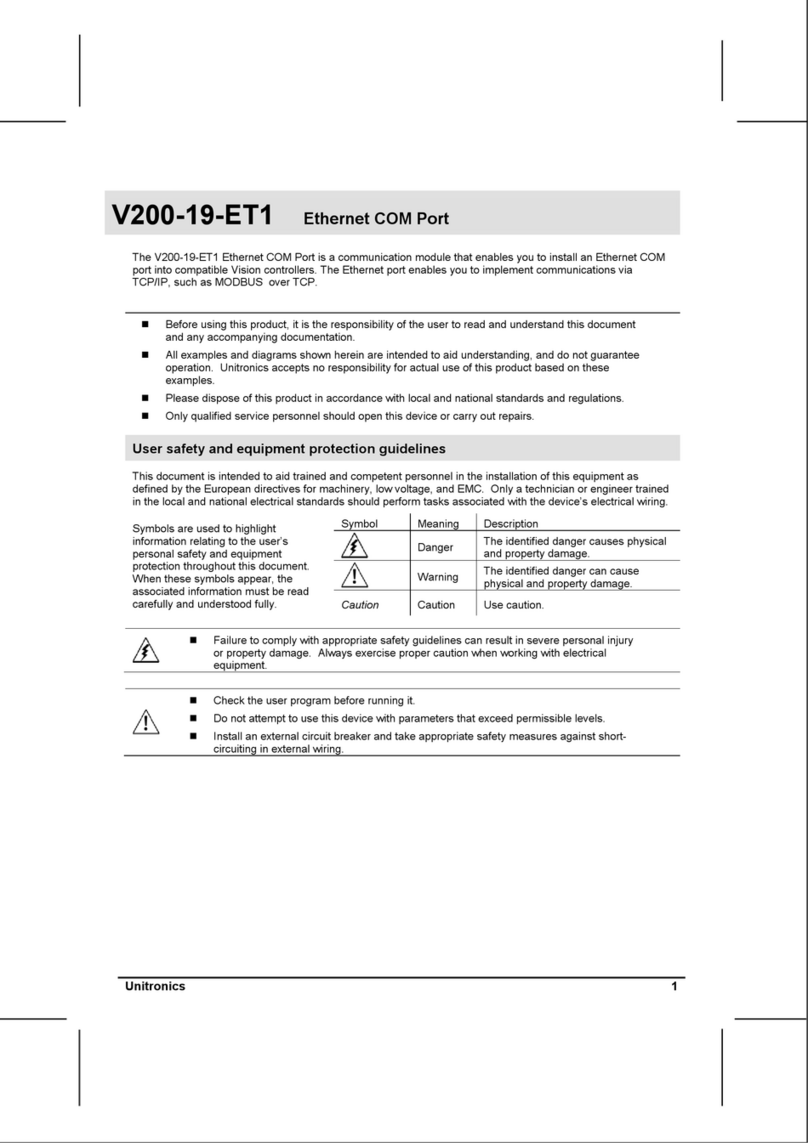
Unitronics
Unitronics V200-19-ET1 quick start guide
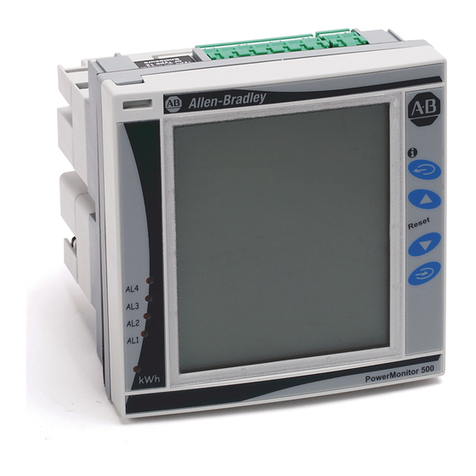
Allen-Bradley
Allen-Bradley PowerMonitor 500 user manual
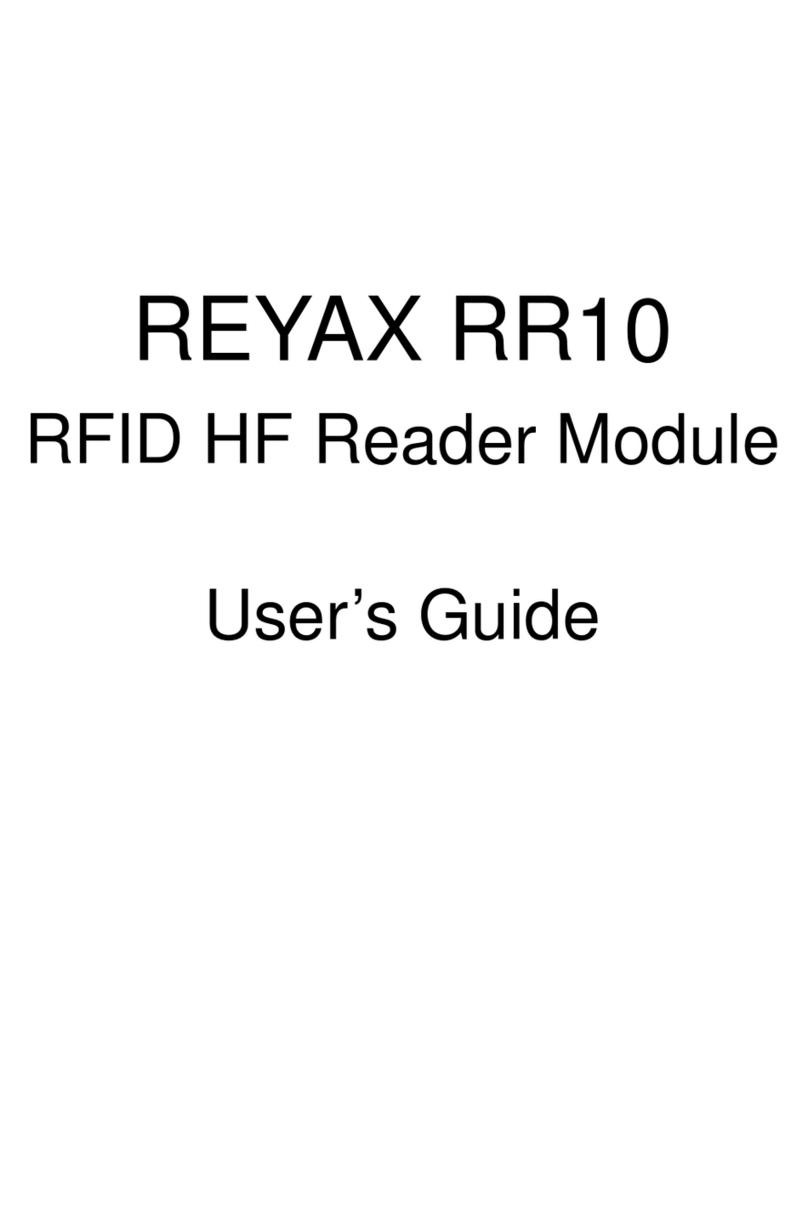
Reyax
Reyax RR10 user guide

